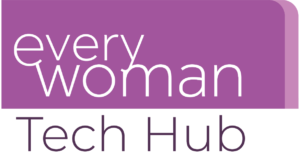
SSE is leading the charge towards a net zero world—and a more inclusive one. Across its business units, it’s innovating and expanding. Within its Cloud and Infrastructure Architecture team, there’s an exciting opportunity to facilitate this growth.
Andy Kirk, Lead Cloud and Infrastructure Architect at SSE, is looking for candidates to fulfil the roles of junior, senior and lead architects. He’s part of a sea of change, inviting capable, ambitious women into a traditionally male-dominated field.
Acknowledging the value of different voices
‘We’re committed to promoting diversity within the cloud and infrastructure architecture team to ensure a balanced perspective in designing systems for our stakeholders,’ says Kirk. This drive calls for more than just getting women through the door; the change to a more inclusive workforce must be systemic.
To this end, SSE is nurturing its IT Inclusion and Diversity community and doing behind-the-scenes work to foster a more inclusive business culture.
To quote Adriana Peralta, Enterprise Architect for SSE’s Renewables business, ‘Safety is one of SSE’s core values’. It matters because it’s only by creating psychological safety that individuals and primarily organisations can grow, expand, and thrive. It creates space for learning, curiosity about what might be possible and the courage to step outside your comfort zone,’ observes Peralta.
Putting male allyship into action
Prompted by insights from the everywoman in Tech conference in March 2023, Kirk has been focusing on a recruitment process that opens the door to a more diverse talent pool.
‘When we advertise our roles, we usually receive applications from mostly middle-aged male candidates,’ he acknowledges. To redress the balance, he’s been exploring ways to improve the advertisement of roles and the entire recruitment process.
‘I asked female colleagues to review my job advert description to eliminate unconscious bias or masculine words that could discourage a female candidate from applying. I’m also making sure that the interview panel includes female colleagues.’
Although it’s still a work in progress, he says he’s confident these changes will lead to a more inclusive candidate pool.
Developing and nurturing talent—whatever their background
Drawn by SSE’s commitment to driving the transition to Net Zero, Peralta applied for her role despite lacking energy industry experience. ‘I had much to learn,’ she remembers, ‘but I found everyone very welcoming and supportive.
‘Changing industries has allowed me to expand my horizons and develop my architecture skills further, transferring my skills and experience and applying them to a new industry and architecture landscape.’
Bringing together different backgrounds, experiences and perspectives and helping everyone to thrive is a cornerstone of an inclusive workplace culture. It requires the vision to see the potential in those differences and the ability to identify when help is needed to enable every employee to fulfil their potential.
Coaching, guidance, and support programmes are integral to career paths at SSE that enable talented individuals with limited direct experience to learn architecture methodology and advance their careers.
‘I progressed through technical roles early on in my career,’ recalls Peralta. ‘I learned it is not the only path to becoming an Enterprise Architect. In fact, one of my ex-colleagues successfully transitioned to Enterprise Architecture from a commercial role.’
Embracing soft skills
Recently referred to by Forbes as ‘professional skills’, so-called soft skills have long been seen as part of the feminine domain. They may indeed be part of a skillset that women find easier to build; however, a more inclusive workplace allows these skills to be fully integrated into working practices. It’s enabling women like Peralta to shine.
‘Soft skills are just as—if not more—important than technical skills,’ she says. ‘As an Enterprise Architect, listening and communication skills and empathy for our stakeholders and customers are paramount.’
‘Of course, being interested in technology and keeping up to date with the latest advancements is also important. However, equally vital is […] a desire to be effective, resilience [and] perseverance to overcome obstacles.’



